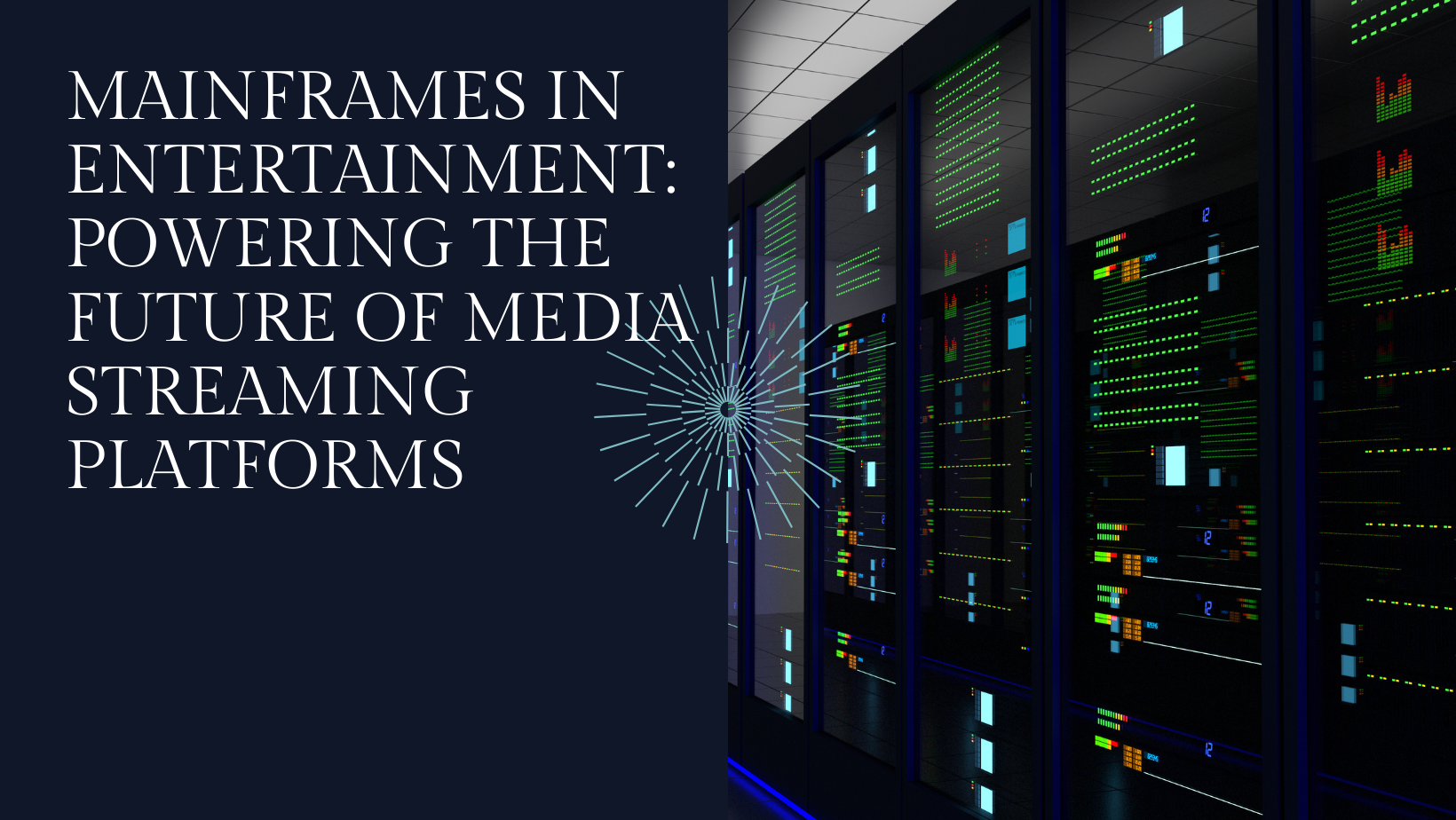
The entertainment industry has undergone a seismic shift in recent years, with digital platforms becoming the primary source of content consumption. As streaming services continue to dominate the landscape, the role of mainframes in supporting the infrastructure of these platforms becomes increasingly crucial. This article explores the symbiotic relationship between mainframes and entertainment, shedding light on how these robust systems play a pivotal role in the seamless delivery of media content.
The Rise of Media Streaming Platforms
The advent of media streaming platforms has revolutionized the way audiences access and consume entertainment content. From on-demand movies and TV shows to live sports events and

music streaming, these platforms have become integral to the daily lives of millions around the globe. However, behind the user-friendly interfaces and diverse content libraries lies a sophisticated infrastructure powered, in part, by mainframe technology.
Mainframes in Entertainment: An Unseen Force
1. Content Delivery at Scale
Media streaming platforms handle an immense volume of data traffic daily, requiring a robust and scalable infrastructure to ensure seamless content delivery. Mainframes, with their unparalleled processing power and reliability, are well-suited for this task. These systems efficiently manage the distribution of multimedia content to users worldwide, ensuring high-quality streaming experiences even during peak demand periods.
2. Load Balancing and Resource Allocation
The success of media streaming platforms hinges on their ability to balance loads and allocate resources dynamically. Mainframes excel in optimizing resource usage, distributing workloads efficiently to prevent bottlenecks and slowdowns. This ensures that users experience smooth playback and minimal buffering, enhancing overall satisfaction with the streaming service.
3. Data Storage and Retrieval
The vast libraries of content hosted by media streaming platforms necessitate robust data storage solutions. Mainframes, equipped with high-capacity storage systems, efficiently store and retrieve multimedia files. This capability is essential for delivering a vast array of content choices to users while maintaining quick access times and minimizing latency.
The Technical Backbone: Key Components
1. Mainframe Clusters
Media streaming platforms often deploy mainframes in clustered configurations to distribute workloads and enhance system redundancy. This ensures that if one mainframe in the cluster experiences issues, others seamlessly take over, preventing service interruptions.
2. High-Speed Connectivity
Fast and reliable connectivity is paramount for media streaming platforms. Mainframes are equipped with high-speed networking capabilities, facilitating swift communication between different components of the streaming infrastructure. This contributes to low latency and quick response times, crucial for delivering real-time content.
3. Content Delivery Networks (CDNs)
Mainframes collaborate with CDNs to optimize content delivery. CDNs cache popular multimedia content on servers strategically located across the globe. Mainframes work in tandem with CDNs to intelligently route user requests, ensuring that content is delivered from the nearest server, minimizing latency and accelerating content delivery.
Challenges and Solutions
While mainframes play a pivotal role in supporting media streaming platforms, they also face unique challenges in this dynamic landscape.
1. Scalability Challenges
The exponential growth of media streaming services brings scalability challenges. Mainframes address this by leveraging technologies such as parallel processing and clustering, allowing them to scale horizontally to meet increasing demand seamlessly.
2. Security Concerns
Given the sensitive nature of digital content and user data, security is paramount. Mainframes implement robust security measures, including encryption and access controls, to safeguard against potential threats and ensure the integrity of streaming platforms.
The Future: Evolving with Technology Trends
As technology advances, so do the trends shaping the intersection of mainframes and entertainment.
1. Edge Computing Integration
The integration of edge computing with mainframes is gaining traction. This approach brings processing closer to the end-user, reducing latency and further enhancing the streaming experience. Mainframes play a crucial role in managing and coordinating edge computing resources.
2. AI-driven Optimization
Artificial intelligence (AI) is increasingly being employed to optimize content delivery. Mainframes leverage AI algorithms to analyze user behavior, predict demand patterns, and dynamically adjust resource allocation for an enhanced streaming experience.
Case Studies: Mainframes in Action
Case Study 1: Global Streaming Giant
A leading global streaming service faced challenges in managing the simultaneous streaming demands of millions of users worldwide. By implementing a mainframe-centric infrastructure, the platform achieved:
- Seamless Scaling: Mainframes facilitated dynamic scaling to accommodate fluctuating user demands during peak hours.
- Enhanced Security: Robust encryption and access controls ensured the protection of user data, addressing growing security concerns.
Case Study 2: Sports Streaming Platform
A sports streaming platform sought to deliver live events to a diverse global audience. Mainframes played a crucial role in:
- Low Latency Streaming: Mainframes, in conjunction with edge computing, minimized latency, providing users with real-time streaming experiences.
- Load Balancing: The platform efficiently distributed the load across mainframe clusters, preventing service interruptions during high-demand events.
Conclusion
Mainframes are the unsung heroes behind the scenes of the digital entertainment revolution. As media streaming platforms continue to evolve and cater to a global audience hungry for diverse content, mainframes will play an increasingly integral role. From ensuring seamless content delivery to addressing scalability challenges and embracing emerging technologies, mainframes are poised to power the future of entertainment.
In conclusion, the synergy between mainframes and media streaming platforms is a testament to the adaptability and endurance of these robust systems. As we navigate the ever-expanding landscape of digital entertainment, mainframes stand as the technical backbone, ensuring that users around the world can enjoy their favorite content without interruption. The future of entertainment is not just on the screen but is intricately woven into the unseen infrastructure powered by mainframes.
